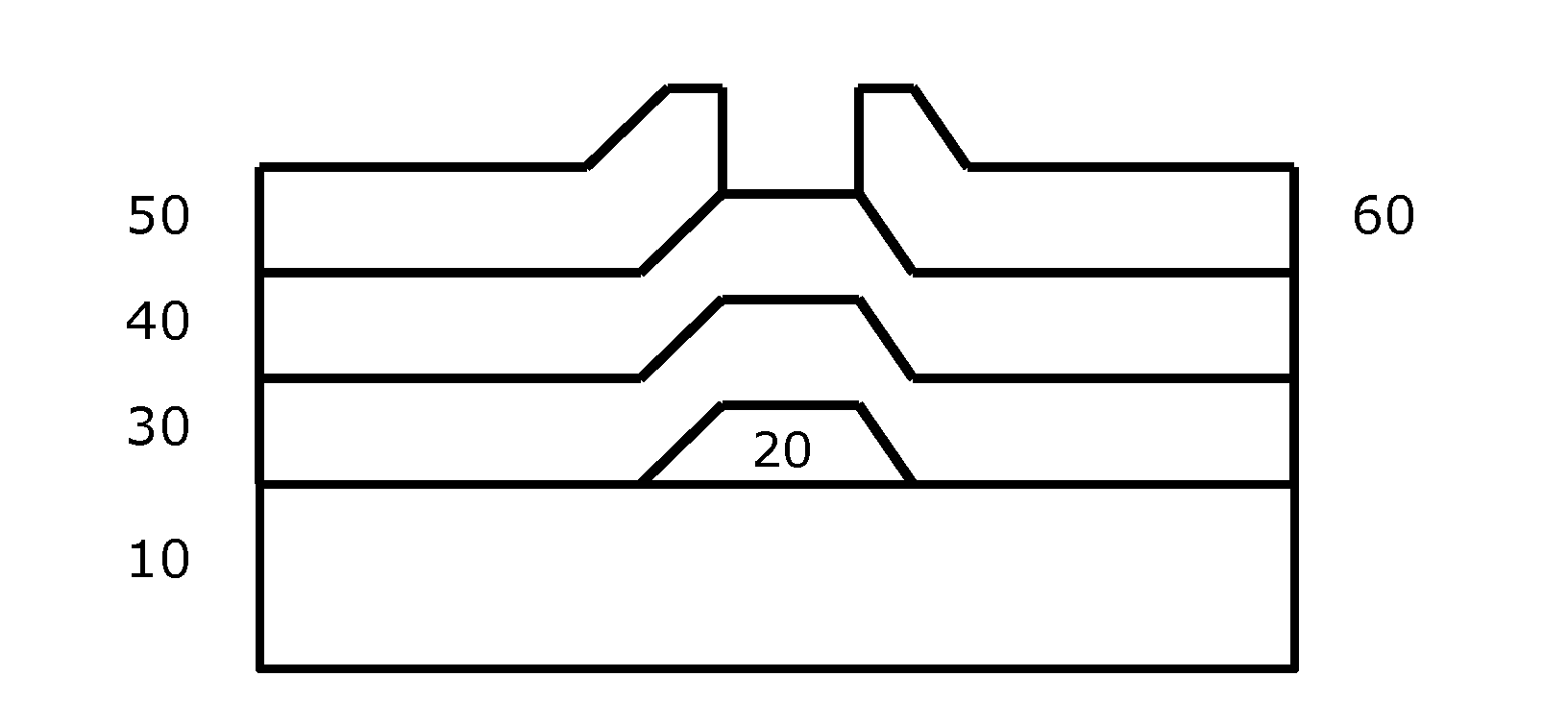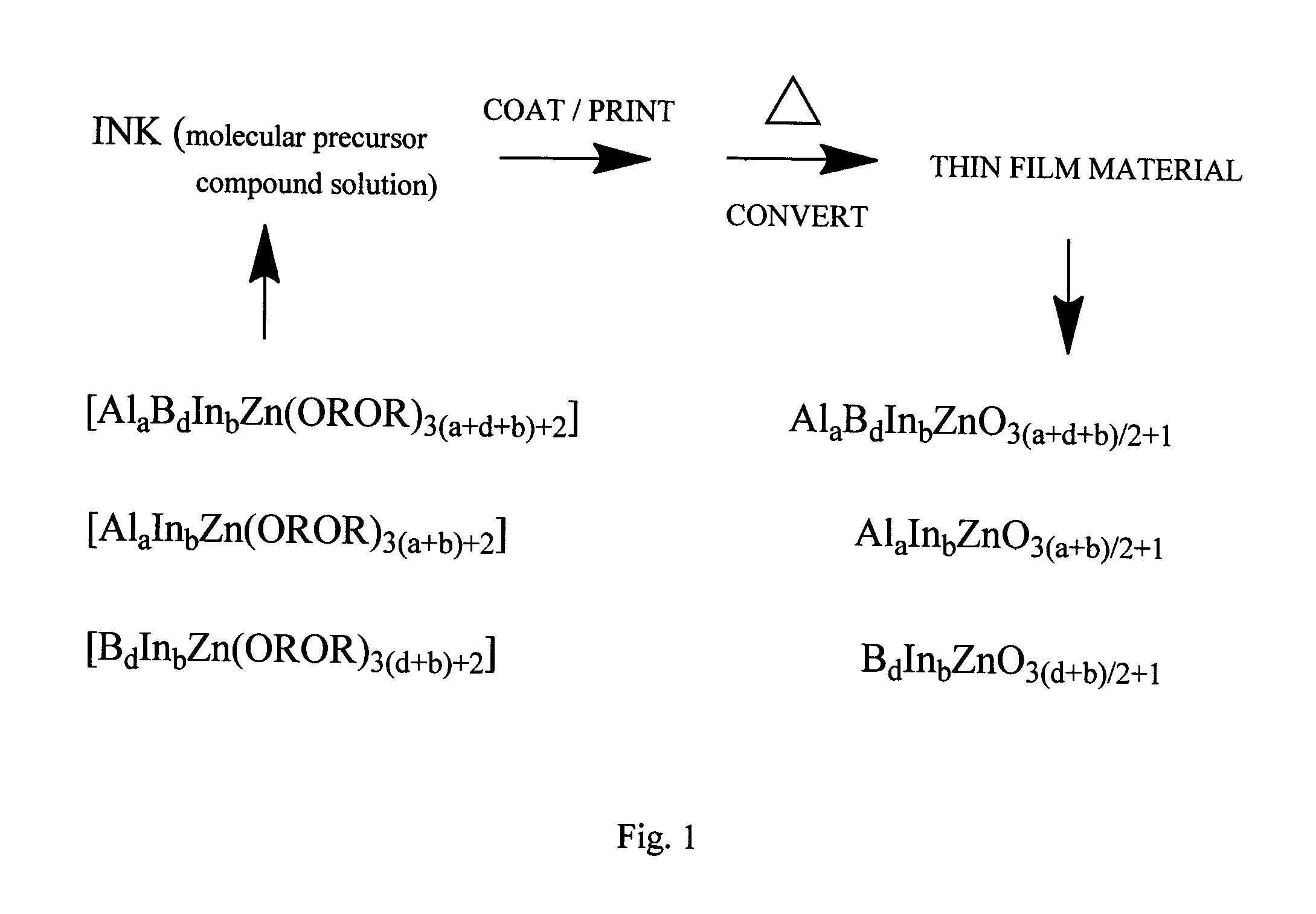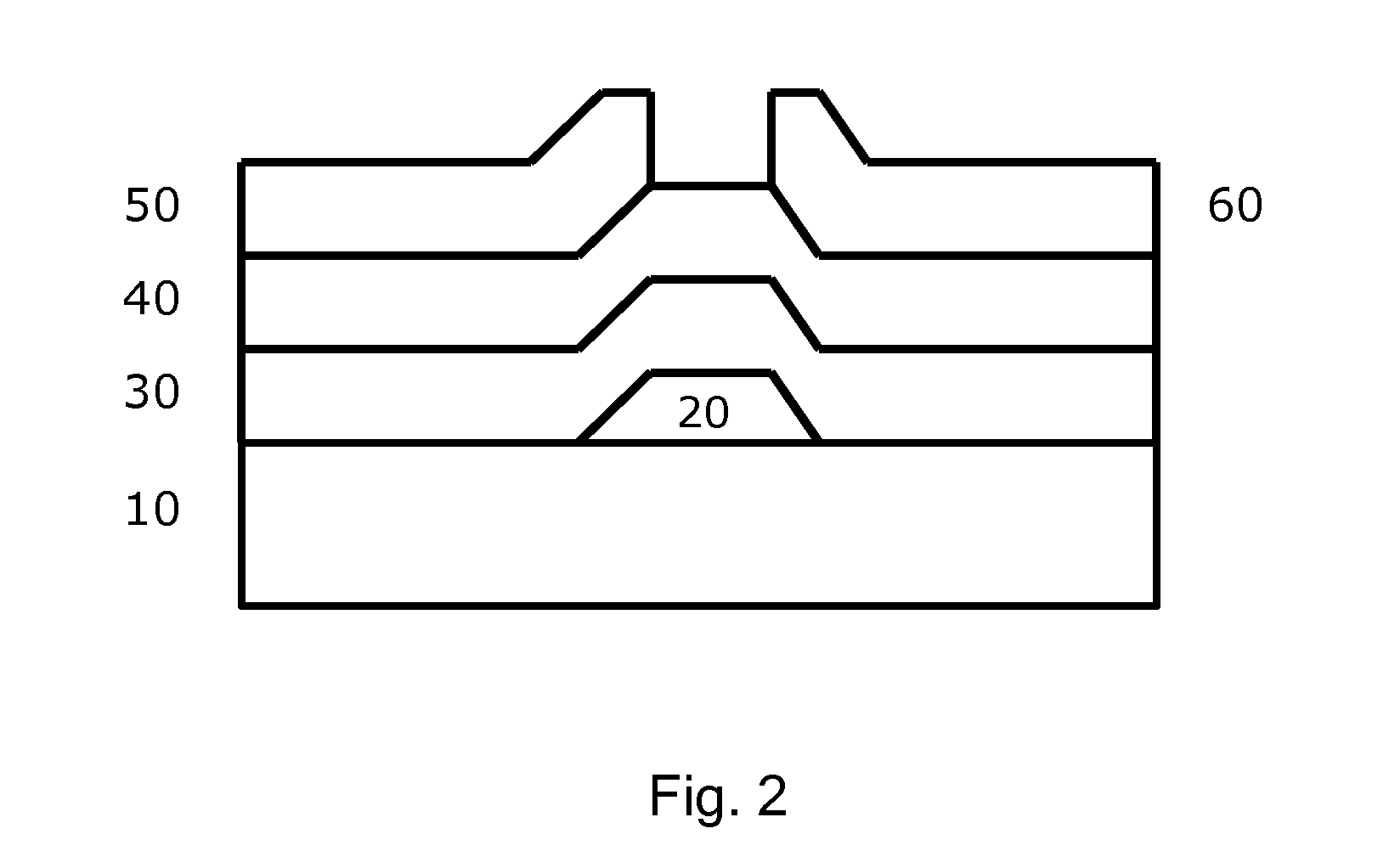Molecular precursor compounds for abizo zinc-group 13 mixed oxide materials
a technology of mixed oxide materials and precursor compounds, which is applied in the direction of non-metal conductors, liquid/solution decomposition chemical coatings, conductors, etc., can solve the problems of large-scale manufacturing of tfts, non-uniform composition of deposited layers, and low manufacturing process speed and throughput, and achieve high yield and high speed
- Summary
- Abstract
- Description
- Claims
- Application Information
AI Technical Summary
Benefits of technology
Problems solved by technology
Method used
Image
Examples
example 1
AIZO Molecular Precursor Compound Al0.99In0.98Zn[OCHCH3CH2OC(CH3)3]5.91[OCH2CH2OCH(CH3)2]2
[0288]To a 200 mL round bottom flask was added Al[OCHCH3CH2OC(CH3)3]3 (0.236 g, 0.562 mmol), In[OCHCH3CH2OC(CH3)3]3 (0.284 g, 0.559 mmol), Zn[OCH2CH2OCH(CH3)2]2 (0.155 g, 0.570 mmol), and benzene (40 mL). The reaction mixture was magnetically stirred and heated at 45° C. (oil bath) for 15 min, resulting in formation of a colorless solution. Stirring was continued for 16 h at 23° C. (room temperature) followed by filtration through a glass fiber pad. Subsequent removal of the volatile species under reduced pressure at 23° C. and heating of the residue at 70° C. for 1 h afforded the product as a pale yellow oil (0.42 g, 60%).
[0289]1H (CDCl3, 400 MHz): 4.38-2.57 (m, 25.6H), 1.84-0.91 (m, 82.9H).
example 2
BIZO Molecular Precursor Compound B0.54In1.31Zn[OCH2CH2OCH(CH3)2]7.55
[0290]To a 100 mL round bottom flask was added B[OCH2CH2OCH(CH3)2]3 (0.104 g, 0.325 mmol), In[OCH2CH2OCH(CH3)2]3 (0.340 g, 0.801 mmol), Zn[OCH2CH2OCH(CH3)2]2 (0.166 g, 0.611 mmol), and benzene (40 mL). The reaction mixture was magnetically stirred and heated at 45° C. (oil bath) for 16 h, resulting in formation of a colorless solution. The solution was cooled to 23° C. (room temperature) and filtered through a glass fiber pad. Subsequent removal of the volatile species under reduced pressure at 23° C. and heating of the residue at 70° C. for 2 h afforded the product as a colorless solid (0.45 g, 74%).
[0291]1H (CDCl3, 400 MHz): 4.49-3.17 (m, 36.92H) 1.81-0.91 (m, 45.30H).
example 3
ABIZO Molecular Precursor Compound B0.15Al0.70In1.42Zn[OCH2CH2OCH(CH3)2]6.71[OCHCH3CH2OC(CH3)3]2.10
[0292]To a 100 mL round bottom flask was added B[OCH2CH2OCH(CH3)2]3 (0.0733 g, 0.229 mmol), Al[OCHCH3CH2OC(CH3)3]3 (0.442 g, 1.050 mmol), In[OCH2CH2OCH(CH3)2]3 (0.902 g, 2.127 mmol), Zn[OCH2CH2OCH(CH3)2]2 (0.408 g, 1.501 mmol), HOCH2CH2OCH(CH3)2 (10.0 mL, 9.0 g, 86 mmol), and benzene (40 mL). The reaction mixture was magnetically stirred and heated at 45° C. (oil bath) for 16 h, resulting in formation of a colorless solution. The solution was cooled to 23° C. (room temperature) and filtered through a glass fiber pad. Subsequent removal of the volatile species under reduced pressure at 23° C. and heating of the residue at 70° C. for 2 h afforded the product as a colorless solid (1.4 g, 77%).
[0293]1H (CDCl3, 400 MHz): 4.35-3.66 (m, 21.5H), 3.66-3.20 (m, 24.1H), 1.52-0.85 (m, 65.5H).
[0294]FIG. 3 shows the TGA trace for conversion of this molecular precursor compound into an ABIZO materia...
PUM
| Property | Measurement | Unit |
|---|---|---|
| Temperature | aaaaa | aaaaa |
| Temperature | aaaaa | aaaaa |
| Ratio | aaaaa | aaaaa |
Abstract
Description
Claims
Application Information
 Login to View More
Login to View More - R&D
- Intellectual Property
- Life Sciences
- Materials
- Tech Scout
- Unparalleled Data Quality
- Higher Quality Content
- 60% Fewer Hallucinations
Browse by: Latest US Patents, China's latest patents, Technical Efficacy Thesaurus, Application Domain, Technology Topic, Popular Technical Reports.
© 2025 PatSnap. All rights reserved.Legal|Privacy policy|Modern Slavery Act Transparency Statement|Sitemap|About US| Contact US: help@patsnap.com



